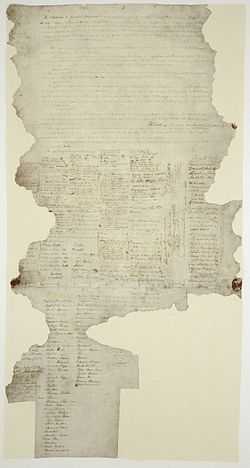William Swainson (lawyer)
| William Swainson | |
|---|---|
| 2nd Attorney-General of the Crown Colony of New Zealand | |
| In office 1841 – 7 May 1856 | |
| Monarch | Victoria |
| Preceded by | Francis Fisher |
| Succeeded by | Frederick Whitaker |
| 1st Speaker of the Legislative Council | |
| In office 1854–1855 | |
| Succeeded by | Thomas Bartley |
| Personal details | |
| Born | 25 April 1809 Lancaster, England |
| Died | 1 December 1884 (aged 75) Auckland, New Zealand |
| Religion | Anglicanism |
William Swainson (25 April 1809 – 1 December 1884) became the second, and last, Attorney-General of the Crown colony of New Zealand and instrumental in setting up the legal system of New Zealand. He was the 1st Speaker of the New Zealand Legislative Council.
Early life
Swainson was born in Lancaster, England on 25 April 1809 and educated in Lancaster Grammar School. His legal education was in Middle Temple and he was called to the bar in 1838.[1]
The Tyne
He worked in conveyancing for only a few years, and with this relatively little experience was appointed to be Attorney-General of New Zealand in 1841. The boat The Tyne left England taking Swainson and two other prominent figures in the future of New Zealand law, William Martin, who was to become the first Chief Justice, and Thomas Outhwaite, who was to become Registrar of the Supreme Court in Auckland, to New Zealand.[2][3]
Legal and political activities

Within six months of their arrival in New Zealand on 25 September 1841, 19 enactments had been passed creating the basis of governance in the new colony.[2] Swainson frequently defended the interests of the Māoris on the issue of land claims from settlers, notably over disputes concerning the Treaty of Waitangi, which had been signed in 1840.[2]
George Grey became governor in November 1845. Swainson, Martin and Grey together formulated components of the New Zealand Constitution Act 1852.[1] Swainson remained Attorney-General until 7 May 1856 when responsible government began in New Zealand. He was replaced as Attorney-General by Frederick Whitaker. Swainson was appointed to the subsequent New Zealand Legislative Council (the upper house) on 26 May 1853 and became its first Speaker, from 16 May 1854. He remained in this position for over a year, to 8 August 1855, when he was also replaced by Frederick Whitaker. Swainson remained a member of the Legislative Council until 18 October 1867 when he was disqualified for absence.[2]
Ecclesiastical activities
Bishop Selwyn approached him to help create the basis of an independent church, tied to the Church of England, by drafting its constitution, although the church never became the established religion. In 1866 Swainson became chancellor of the Anglican Diocese of Auckland.[1] He died a bachelor in Auckland, on 1 December 1884.
See also
William Swainson is commonly confused with the naturalist William John Swainson who also arrived in New Zealand in 1841.
References
- ↑ 1.0 1.1 1.2 Reid, Graeme. "Swainson, William 1809 - 1884". Dictionary of New Zealand Biography. Ministry for Culture and Heritage. Retrieved 5 April 2011.
- ↑ 2.0 2.1 2.2 2.3 1966 New Zealand Encyclopaedia entry on SWAINSON, William, 1809–1884
- ↑ Passenger list of The Tyne 1841 voyage from England to New Zealand
| Political offices | ||
|---|---|---|
| New creation | Speaker of the New Zealand Legislative Council 1854–1855 |
Succeeded by Frederick Whitaker |
|